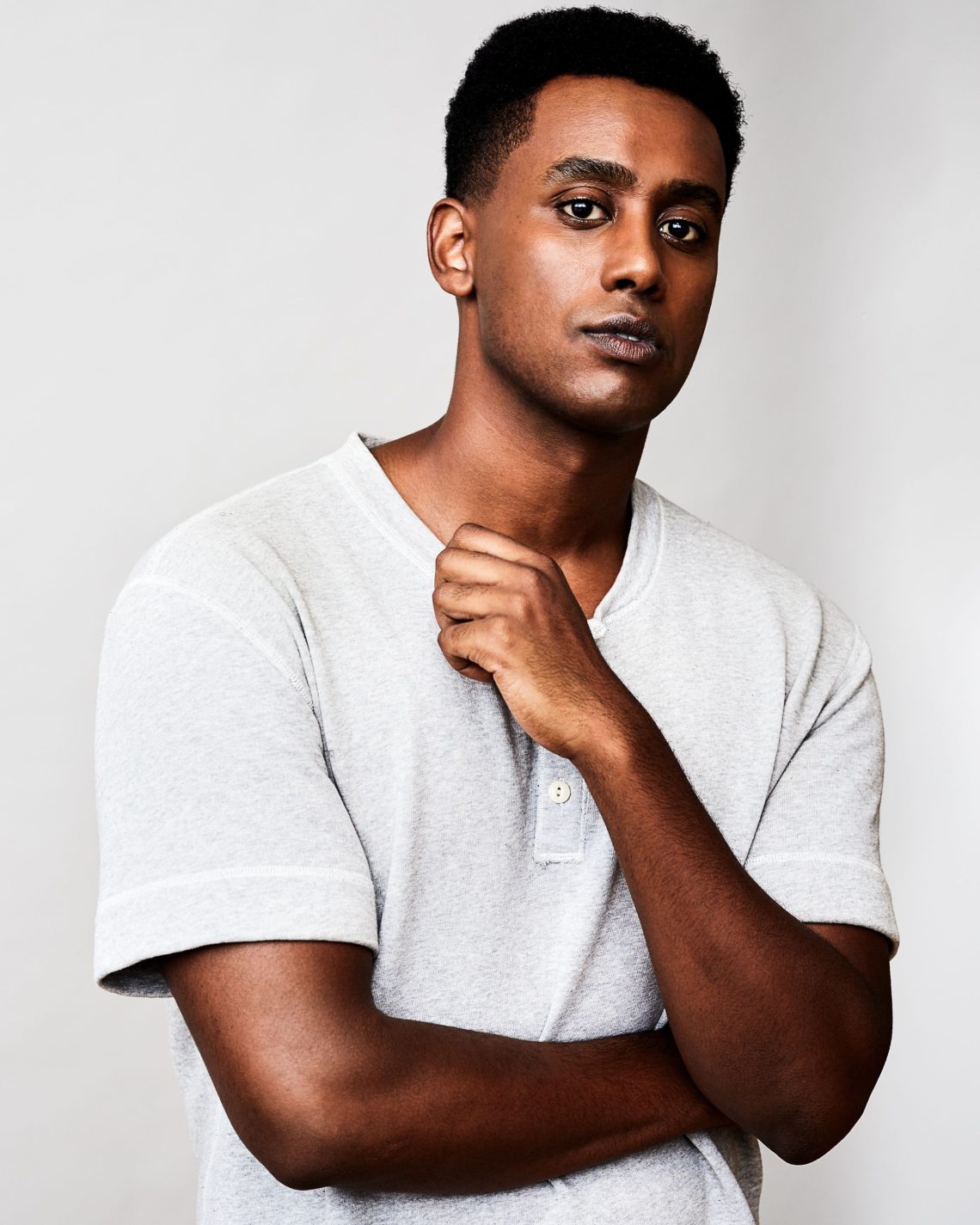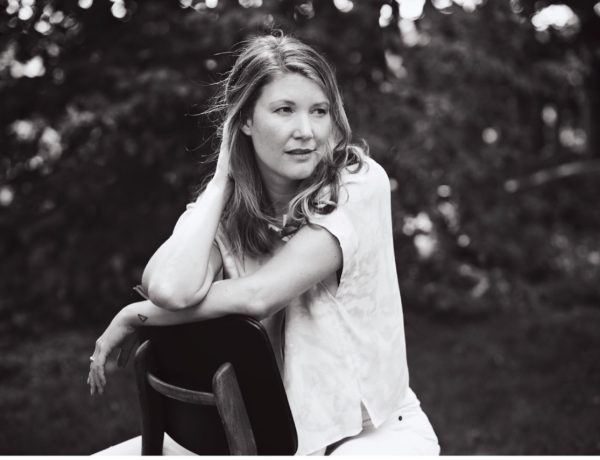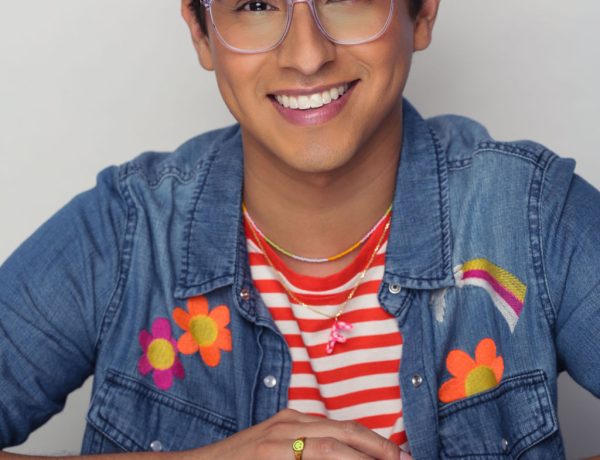Awards season is a chance for Araya Mengesha to both revel in recognition and support his fellow performer. “It’s exciting to be heading into Canadian Screen Week and then the ACTRA Awards after that,” he says. “I’m excited to be around everyone after watching everyone’s stuff and getting more and more excited about the material and everything that’s been made in the past year. Especially with the Canadian Screen Awards. As a member of the academy, you get to watch everything so you can vote for other people and sometimes yourself. It’s been really cool to see all the work outside of the film festivals. This is the opportunity to really get to see everything in one place and it’s so impressive what everybody’s doing. I’m really excited to be in a room where we all get to cheer each other on.” The atmosphere of camaraderie is particularly welcome in a profession that often seems to be on an island. “It feels like a high school reunion. What we do is sometimes so insular, especially as an actor. it gets even more so if you’re not on a project for the entirety of the shoot or multiple seasons. This is your chance to actually see people that you really like and friends that maybe you don’t get to see too often.” Araya emphasizes the importance of audience engagement. Knowing that your craft viscerally impacts someone can be more profound than any accolade. “I’m always happier with people who actually see the thing and have something to say about it, like how it affected them or challenged them. Even if they didn’t like it, having some kind of response to it is always more gratifying. That’s why we make these things, so that people experience them and hopefully are moved in some way by them. That’s the biggest thing for me.”
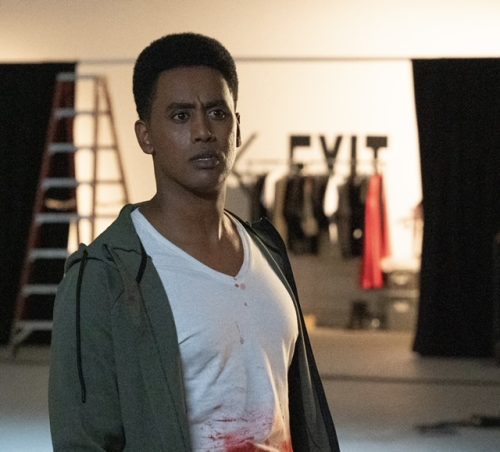 Producing that sort of introspection can be a rare feat, but his latest project, Revenge of the Black Best Friend, rises to the occasion armed with sharp wit. “Revenge of the Black Best Friend is a creation of the mind of Amanda Parris, who is an incredible human and creator of all kinds. I remember her talking about this concept years ago when it was just an idea. They were getting ready to start shooting and they offered me the part of Phil. There is this central character called Dr. Toni Shakur, who is taking on Black tropes in media one at a time and being a champion for these characters that have existed in the public space for a long time. Then it turns into a question of, when your whole business is about defending those things or examining those things, then by definition, don’t you need those things to exist in order to survive? Until things get turned on her.” Araya plays Phil, an actor who adamantly refuses to fall victim to the stereotype meat grinder. “Phil is in an episode of the show where we’re looking at the trope of the Black person in horror films who dies first. It’s a trope that’s existed for many years and lingers around sometimes today, even though I think people are far more aware of it now and try to avoid it. Phil is an actor who’s on the set of a horror movie, his big break. He learns as he’s shooting his death scene that the Black person who dies first is a thing. He looks himself up and realizes that he’s actually died first a lot, and then gets back to set and refuses to die,” Araya laughs. “You’re looking at all of these things with a comedic lens, and I think there’s heavy Get Out inspiration inside of this particular part of the show. We had Motion, who wrote this particular episode, and Thyrone Tommy, who directed this episode and Julian De Zotti, who played the director and is also one of our producers. I think what we’re able to capture is this fine balance between the tension of the core genre, but always with the pressure release of comedy so people can get a little access to what it feels like. Permission to laugh is so important and something that was captured really well in this show.”
Producing that sort of introspection can be a rare feat, but his latest project, Revenge of the Black Best Friend, rises to the occasion armed with sharp wit. “Revenge of the Black Best Friend is a creation of the mind of Amanda Parris, who is an incredible human and creator of all kinds. I remember her talking about this concept years ago when it was just an idea. They were getting ready to start shooting and they offered me the part of Phil. There is this central character called Dr. Toni Shakur, who is taking on Black tropes in media one at a time and being a champion for these characters that have existed in the public space for a long time. Then it turns into a question of, when your whole business is about defending those things or examining those things, then by definition, don’t you need those things to exist in order to survive? Until things get turned on her.” Araya plays Phil, an actor who adamantly refuses to fall victim to the stereotype meat grinder. “Phil is in an episode of the show where we’re looking at the trope of the Black person in horror films who dies first. It’s a trope that’s existed for many years and lingers around sometimes today, even though I think people are far more aware of it now and try to avoid it. Phil is an actor who’s on the set of a horror movie, his big break. He learns as he’s shooting his death scene that the Black person who dies first is a thing. He looks himself up and realizes that he’s actually died first a lot, and then gets back to set and refuses to die,” Araya laughs. “You’re looking at all of these things with a comedic lens, and I think there’s heavy Get Out inspiration inside of this particular part of the show. We had Motion, who wrote this particular episode, and Thyrone Tommy, who directed this episode and Julian De Zotti, who played the director and is also one of our producers. I think what we’re able to capture is this fine balance between the tension of the core genre, but always with the pressure release of comedy so people can get a little access to what it feels like. Permission to laugh is so important and something that was captured really well in this show.”
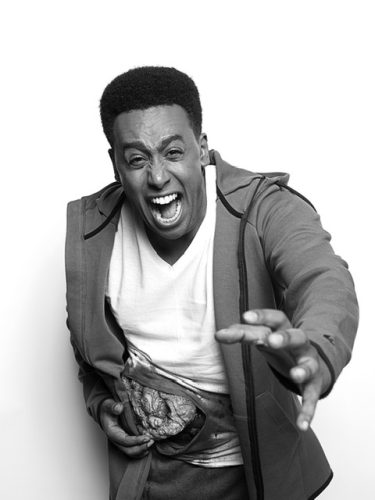 The characters confront antiblack tropes from a variety of perspectives, allowing the show and in turn the viewer to meditate on broader systemic biases. “Sometimes, like in my case, a character is learning that this trope or this stereotype exists and then having to deal with that in real time. In other episodes, there are characters who know and are actively challenging those tropes as their characters. There’s another actor who’s trying to reconcile why he was cut from a movie because they were trying to shape a certain narrative about and utilize his Blackness without wanting to really hold on to the three-dimensional examination of his character as a person. And so everybody comes at it from a different way internally and as a whole. The show leans on that comedy so that you can laugh for a moment, but because you’re laughing, I think you’re also forced to consider what you’re laughing at or with. And in that way, I think you go a lot further in imprinting people that this thing is actually a stereotype or a trope.” That awareness can impact future scripts and inspire necessary new invitations to the writers room. “The next time you watch something that isn’t inside of Revenge of the Black Best Friend, but just something that exists in media that’s getting repeated, you have that reminder and maybe that leaves something behind where you go, ‘Oh, actually they’re doing that thing.” I think enough of that can encourage people to get a little more creative in their writing and actually, more importantly, leave space for people who wouldn’t step into those stereotypes because they hold a lived experience of the people that are being represented.” Visibility is not about visibility for the sake of it, Araya reminds us. “We talk about representation and the ability for people to see themselves up on screen, but also the ability to be exposed to narratives that are outside of the norm or what has been typically shown. That’s what we’re looking at. It’s not just about having presence, but meaningful presence on screen. When it comes to what we’re seeing on the screen, it’s about what you do when there’s representation on there. Otherwise you’re just the Black best friend.”
The characters confront antiblack tropes from a variety of perspectives, allowing the show and in turn the viewer to meditate on broader systemic biases. “Sometimes, like in my case, a character is learning that this trope or this stereotype exists and then having to deal with that in real time. In other episodes, there are characters who know and are actively challenging those tropes as their characters. There’s another actor who’s trying to reconcile why he was cut from a movie because they were trying to shape a certain narrative about and utilize his Blackness without wanting to really hold on to the three-dimensional examination of his character as a person. And so everybody comes at it from a different way internally and as a whole. The show leans on that comedy so that you can laugh for a moment, but because you’re laughing, I think you’re also forced to consider what you’re laughing at or with. And in that way, I think you go a lot further in imprinting people that this thing is actually a stereotype or a trope.” That awareness can impact future scripts and inspire necessary new invitations to the writers room. “The next time you watch something that isn’t inside of Revenge of the Black Best Friend, but just something that exists in media that’s getting repeated, you have that reminder and maybe that leaves something behind where you go, ‘Oh, actually they’re doing that thing.” I think enough of that can encourage people to get a little more creative in their writing and actually, more importantly, leave space for people who wouldn’t step into those stereotypes because they hold a lived experience of the people that are being represented.” Visibility is not about visibility for the sake of it, Araya reminds us. “We talk about representation and the ability for people to see themselves up on screen, but also the ability to be exposed to narratives that are outside of the norm or what has been typically shown. That’s what we’re looking at. It’s not just about having presence, but meaningful presence on screen. When it comes to what we’re seeing on the screen, it’s about what you do when there’s representation on there. Otherwise you’re just the Black best friend.”
The series can be understood as a guiding compass for those striving to evade these problematic pitfalls. “It’s a template for what not to do. If you want to execute something that’s satirical and has commentary, look at this as an example. If we’re looking at how not to reinforce Black stereotypes and worn out tropes in the creative space, then this is a great place to look. You can go, ‘Am I doing that one? Oh, we’re doing the one that dies first. Okay, let’s look at this again.’ We need those markers that make us realize, ‘I’m stepping into the obvious thing.’ Even creatively, to come up with something interesting, we need that.” The benefit of including people in every aspect of the process whose lives actually mirror the stories that you’re attempting to tell cannot be overstated. “A majority of this show is created by folks who are of the experience that the show is about. So this is an incredible set to be on because it was so much of a Black set in so many ways and there’s a comfort inside of that. There’s an understanding that exists inside of that within the writer’s room and among the directors and actors and crew and the hair, the makeup, all across departments. Not to say that it was only Black, but there was so much representation both in front of and behind the camera and infused into the DNA of the show. That goes a long way towards avoiding these biases and avoiding actively having an antiblackness within the character creation because it came from Black voices. You have multiple people in rooms within different perspectives. It’s not to say that everyone will be thinking the same thing, but you have people that share an experience that are now diving into what it is like being inside of that experience. I think when you have that, you have a pretty good shot at not reinforcing some potentially dangerous stereotypes inside of the work.” Allowing folks to helm their own narratives is invaluable to building authentic worlds. Stream Revenge of the Black Best Friend now on CBC Gem.
Read more Celebrity Interviews on ClicheMag.com
Araya Mengesha Exposes Antiblack Tropes in “Revenge of the Black Best Friend.” Photo Credit: First image courtesy of Project Four PR. The rest of the images are by Duane Cole.

